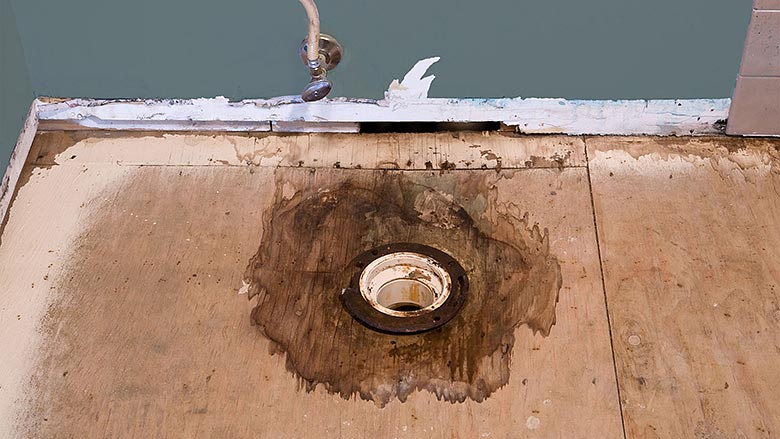Just How to Avoid Bathroom Water Damage
Just How to Avoid Bathroom Water Damage
Blog Article
Have you been trying to find content about Preventing Water Damage in the Bathroom?

The restroom is very vulnerable for wet accumulation as well as potential water damage as a result of the frequent use of water in it. This write-up provides easy assessment techniques to assist identifying water damage dangers.
The frequent use of water in the washroom makes it extremely prone for wet accumulation as well as possible water damages. By inspecting it frequently, you can minimize water relevant problems.
The following collection of examinations is easy to perform as well as must be done when in every 3 months in order to maintain your washroom in good shape and to prevent prospective water damages triggered by the bath tub, the shower, pipeline joints and also plumbing, sinks, closets, and also the toilet
Do not neglect performing these evaluations as well as be extensive while doing them. Bear in mind that these basic assessments can conserve you a lot of money by supplying early indicators for water damages
Sinks as well as Cabinets
Sinks and also closets are revealed to dampness and also moisture day-to-day as well as are commonly forgotten. Evaluate consistently under the sink and also on the kitchen counter over it. Fix any type of drip in the trap as it may suggest drainpipe troubles. Browse the sink, sluggish draining pipes may indicate an obstructed drainpipe. Change sink seals if they are split or loose.
Bathtub and Shower
The shower and also bath tub need special attention and also upkeep. Inspect the ceramic tiles and also change if split. Make certain that there is no missing cement in between the ceramic tiles. Inspect and also change broken caulking at joints where the walls fulfill the flooring or the bathtub. Clogged drains pipes as well as pipes troubles will certainly avoid the bathtub from drying out and might suggest major problems under the tub. Consult with a specialist promptly to prevent architectural damage. Pay attention to stainings or soft areas around the bathtub wall surfaces as they may show an interior leak.
Plumbing
Signs for water damages are tough to discover because most pipelines are set up inside the wall surfaces.
Pay unique attention to floor covering as well as walls moisture and also spots as they may show an undetectable plumbing problem. Inspect moisture degrees in adjoining areas also.
The Toilet
The commode is a prone water joint. Inspect the water lines and look for leaks around the commode seat, in the pipe, and under the water container. If you discover any indicators of moisture on the flooring around the toilet, check for leakages in the toilet edge and storage tank seals.
Be aware that hanging commode bowl antiperspirants raises the possibilities for obstructions.
Water Damage Signs In The Bathroom To Avoid Cleanup
Musty smell
This is one of the easiest signs to catch because musty smells are so odorous. The damp, earthy, moldy smell should be a big red flag. The smell will develop when moisture gets trapped in surfaces, and begins to facilitate mold growth. Leaking pipes under cabinets, inside walls, and behind shower fixtures will cause moisture to stay trapped and not dry, which will lead to mold growth and spread. As soon as you notice any musty smells in your bathroom, have it checked for hidden water damage and cleanup signs.
Visible mold
If the smell isn’t there to give it away, sometimes you will actually see mold growth. Finding mold in your bathroom is a serious problem, because mold is very harmful to your health. By the time mold growth is visible, it also means that water damage has already occurred and been present for some time. The only way the mold problem can be resolved is to find the source of the moisture and get it stopped. To safely and adequately remove mold, you need to have professionals handle the remediation. Do not waste any time in getting mold problems addressed, fixed, and sanitized so that you can protect you and your family from the many respiratory symptoms caused by mold exposure.
Damaged floors
Bathroom floors should be able to withstand some exposure to water while still remaining in good condition. However, when excess exposure or water leaks occur, they will begin to damage even the most water-resistant flooring. If you notice any cracking, bubbling, staining, or warping on your bathroom floors, there is probably a water leak somewhere causing the distortion. If you notice areas of the floor have become softer, or even have a spongy feeling, there is probably damage to the subfloor. Subflooring is typically made up of plywood. When plywood is exposed to water or moisture, it will absorb it. Once it has become saturated, the weight of the excess water will cause the wood to swell and soften. Check the floors in your bathroom frequently to catch any of these sings before they lead to damaged subflooring.
Changes on walls
When water leaks behind walls, it will cause changes in the drywall. Peeling plaster, blistering paint, and soggy wallpaper are all good indicators that excess water is building up behind the wall. Water leaking behind drywall will cause it to swell and be soft to the tough. If you start to notice gaps along the trim of your walls, or where tile meets the wall, it could also be a strong indicator that there is a leak behind the wall. Any changes, distortion, or damage on the walls should be evaluated as soon as you notice it to prevent further water damage and cleanup.

I am very taken with Preventing Water Damage in the Bathroom and I am praying you appreciated the entire blog posting. Are you aware of somebody who is curious about the topic? Be sure share it. Thanks a lot for taking the time to read it.
Estimate Report this page